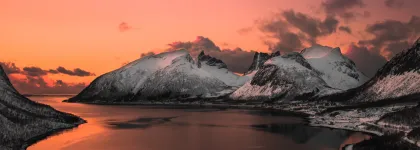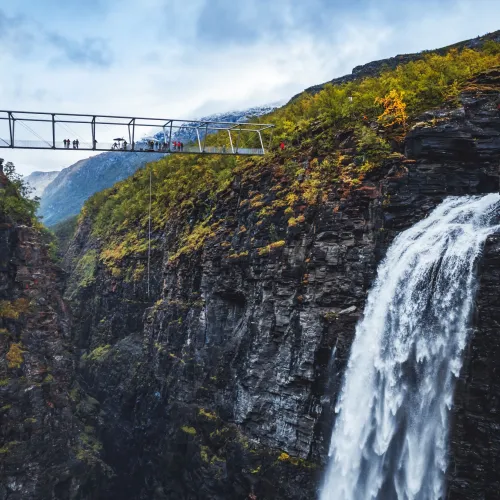Kåfjord is known as the cultural municipality of Troms, and the Kåfjord culture is characterized by the meeting between Norwegian, Kven, and Sami language and culture.
The Kåfjord culture is also strongly characterized by being framed by a very mountainous municipality with terrain that allows for development both on foot, on skis, by bike and on snowmobiles.
Meeting of the Three Tribes
The term "meeting of three tribes" is used to describe the culture around the Lyngenfjord. For centuries, Norwegians, Sami and Kvens have lived and worked side by side. This has had a strong influence on place names, language, traditions and way of life.
Centre for Northern Peoples - Manndalen
The Centre for Northern Peoples is an active Sami cultural centre and indigenous centre in Manndalen with the High North and Sápmi as work areas.
The centre houses a museum, gallery, gift shop, cultural hall, Sea Sami kitchen, Riddu Riddu Festivala, Sami library service, NRK Sápmi, Giellasiida – Sami language centre, the Sami Parliament and Nord-Troms museum.
Hotel Savoy
One of Jan Baalsrud's hiding places in the spring of 1943, from 12 to 25 April 1943. Hotel Savoy is located in Kåfjord municipality, and when you cross the municipal border to Kåfjord municipality, Hotel Savoy is located on the shore to the left. There is currently no sign for the Hotel Savoy, so we recommend that you use Google Maps.
Baalsrudhula - Manndalen
Baalsrudhula was one of the residences of the famous resistance fighter Jan Baalsrud during World War II. This was one of the places of residence of the famous resistance fighter Jan Baalsrud, who fled from the Germans from Rebbenesøya to Sweden during WW2.
The tour description can be found here.
Sandeng cemetery - Manndalen
Baalsrud's last wish before he died in 1988 was to be buried in the cemetery in Manndalen. His tombstone is modestly placed on the left side by the fence when entering, and is no different from the others except by the epitaph "Thank you to everyone who helped me to freedom in 1943."
Holmenes Sea Sami Farm - Birtavarre
At Holmenes farm you get an insight into how a Sea Sami family living by the Lyngenfjord lived before the war. The farm dates from around 1850 and was inhabited until 1964. A visit here will give you an important insight into life then and now!




















